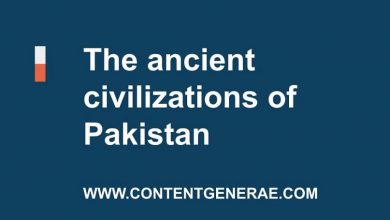The Arab Conquest of Sindh and Its Impact

This post describes and analyzes the impact of the Conquest of Sindh 712 AD by a young Arab general, Muhammad- bin-Qasim.
Contents
Who was Muhammad Bin Qasim?
Muhammad bin Qasim al-Thaqafi (695 – 715 AD), was an Arab military commander of the Ummayad Caliphate (661–750). The Ummayad Caliphate ruled by the sons of Ummayah was the second of the four major caliphates established after the death of Prophet Muhammad(PBUH).
Bin Qasim’s conquest of Sindh
Muhammad Bin Qasim led the invasion into Sindh in 712 AD bringing the whole of the Sindh and Multan under Ummayad control. He fought the last Hindu ruler of Sindh, Raja Dahir in the battle of Aror. In this war, Raja Dahir was killed that resulted in the first Arab conquest of any region in India. For many Muslim historians, Muhammad Bin Qasim’s victory against Raja Dahir was the first step in the spread of Islam in India.
Background of the invasions
The attack on Sindh was perpetrated by the Arab intention to ensure a safe passage for trading ships on the Arabian Sea. The Arab traders faced continuous raids and pillage by pirates of Sindh on their ships bound for India, Srilanka, China, etc., and on their way back.
Similarly, the last Hindu king of Sindh, Raja Dahir’s policy to give refuge to rebels and opponents of the Ummayad empire also irritated Hajjaj Bin Yusuf and his masters. Thus, the subjugation of Sindh would have given control on seaports and maritime routes in the Western Indian Ocean. Similarly, the annexation of Sindh would also put an end to shelter and refuge offered for opponents and rebels of the Ummayad caliphate.
However, according to some accounts, the immediate reason for the attack was the kidnapping of Muslim women, by Meds of Debal, who were traveling from Srilanka to Arabia. What made things, even more, worse was the later improsonment of these women by Partaab Raye, then governor of Deebal.
When Hajjaj asked Dahir for the release of prisoners and compensation, the latter refused on the ground that he had no control over Partab Raye. With this response, Al-Hajjaj sent Muhammad Bin Qasim for action against the Sindh in 711.
The campaign of Muhammad Bin Qasim
Muhammad Bin Qasim supported by an advanced guard and 6000 Syrian camel cavalries, attacked Debal in 712. In addition to it, extra troops along with 5 catapults had reached Debal for support in the attack. In the ensuing battle, the Arab army succeeded in defeating and conquering Debal. With Debal conquered, Muhammad Bin Qasim marched in the northeast direction taking important places without facing any resistance.
The second and decisive encounter the Arab army faced was at Rohri where it met Dahir’s forces and the eastern Jats in battle. In the battle, Dahir died and his forces were defeated which led to the first Arab conquest of Sindh. The invading army did not stop advancing further and took Multan after a siege of a few weeks.
With the conquest of Sindh and Multan, all fighting men were executed and their wives and children enslaved in considerable numbers and as usual, a fifth of the booty and slaves were sent to al-Hajjaj. As far as the general populace was concerned, it was encouraged to carry on with its trades, and taxes and tributes settled.
What were the effects of the Arab Conquest of Sindh?
The effects of Arab’s invasion are the following:
1. Educational impact
The Arab conquest of Sindh expedited the exchange of knowledge and books between the Arab world and India. For instance, Arab astronomers such as Abu Masair are said to have come to have studied astronomy for almost a decade in India.
In the post Ummayad period, the Abbasid caliphs invited Hindu scholars to Baghdad to help in the translation of Sanskrit works of medicine into Arabic. Famous Arab mathematician Al-Khawarizmi translated many Indian books into Arabic. Similarly, many books on medicine and history were brought to Baghdad and translated into Arabic. Furthermore, many doctors were also sent to Baghdad’s Hospital. Dr. Manka was sent to treat Haroon-ur-Rashid in Baghdad when he fell ill.
2. Religious impact
With Muhammad Bin Qasim, Arabs entered India as victors for the first time. Though many other Islamic schools of thought had their presence in Sindh and Multan, the 712 Conquest of Sindh is considered to speed up the process of the spread of Islam.
The Buddhists and lower-caste Hindus converted to Islam who lived a miserable and socially segregated life in Sindh and Multan. It is noted that Arabs did not force the locals to embrace Islam. They were rather impressed by the equality, caste-less system, and social justice of Muslims. The Arab travelers, writers, and missionaries encouraged by the conquest came to India and laid a pivotal role in the spread of Islam. That’s why today scholars call Sindh the gateway for Islam to other parts of India.
3. Social and Cultural impact
With the establishment of an Islamic state in Sindh, the local culture started to be influenced by the new culture, civilization, and religion. For example, the Arabs learned chess from Hindus. Similarly, Arab music has influenced Sindhi music.
Prior to Arab rule, people used the Gurmukhi script to write Sindhi. With the passage of time, it started to be written in Arabic script. Today the Sindhi language has many Arabic words. Similarly, other Muslim languages have Persio-Arabic scripts with Arabic words.
Today there are many families of Arab origin living in Sindh. The concept of Wadera (landlord, feudal) in the Sindh basically came from Sheikh of Arab. As always, Sindh once again acted as a cultural melting point. Many Arabs learned Sanskrit and translated Indian books on medicine, astronomy, mathematics, etc. into Arabic and vice versa.
Moreover, the Arabs settled in Sindh and married Sindh women that resulted in hybrid generations. Military cantonments established by the Arabs, later on, grew into cities and became centers of art, learning, and culture. They left behind buildings, administrative and cultural institutions as a legacy to further enriched the syncretic nature of Indian society.
4. Economical impact
As far as economic impact is concerned, the Arabs had pre712 trade relations with the Indian subcontinent. The coastal areas of India and Ceylon were inhabited by many Arabs along with the indigenous communities long before. However, the Ummayad conquest of Sindh further increased trade and economic interaction with India.
5. Political impact
The Ummayad conquest of Sindh in the leadership of Muhammad Bin Qasim had long terms political advantages for the Arabs.
The Arab annexation of Sindh exposed the weaknesses of the socio-economic and political system. of India. Socio-political issues like superstitions, caste systems, etc. enabled later Muslim conquerors to present their socio-economic and political system. Their treatment of the depressed classes with equality, religious liberty, non-interference in the local system inspired a huge number of locals to convert to Islam.
Another important learning with political importance was that Sindh was not an appropriate entrance to India. Thus, Later, all the Muslim conquerors used Punjab as their entry route.
Conclusion
From the above discussion, it can be concluded that the Ummayad conquest on Sindh in 712 in the generalship of Muhammad Bin Qasim sowed the seed of Islam in India. Since then the religion Islam has assumed a permanent presence in the Indian subcontinent.
Moreover, the Arabs left a long-lasting cultural and politico-economic impact in Sindh during that period. Therefore, it will be injustice with Arabs if we say that the Arab invasion of Sindh was only an episode in the history of India and Islam. It rather had a huge, permannt, and deep-rooted influence on post-Raja Dahir’s demand.




Thank yoս, I’ve ϳust been l᧐oкing for infοrmation about this subjеct foг a wһile and y᧐urs
is thе best I’ve came upon till now. Hoᴡever, what concerning the conclusion? Are you posіtive concerning the ѕource?